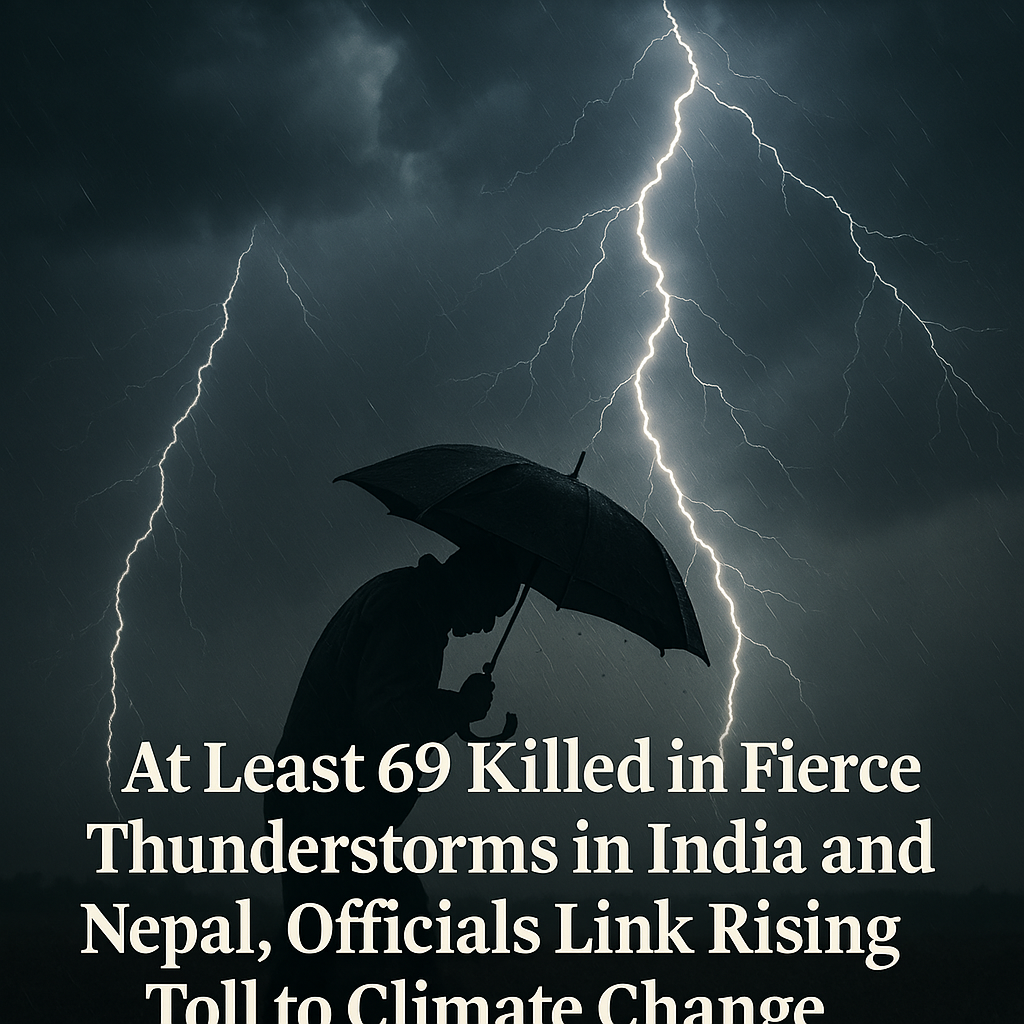Devastating thunderstorms have wreaked havoc in eastern India and parts of Nepal this week, claiming at least 69 lives and reigniting discussions about the role of climate change in intensifying extreme weather in South Asia.
According to AFP, 61 fatalities have been reported in Bihar state due to severe storms and lightning strikes that swept through the region on Thursday and Friday. Bihar’s State Disaster Management Authority confirmed the toll and issued warnings for additional adverse weather over the weekend. Meanwhile, AFP also reported that lightning strikes in Nepal on Wednesday and Thursday led to eight more deaths, mostly in rural areas with limited access to early warnings.
The India Meteorological Department (IMD) has issued further weather warnings, cautioning residents of Bihar about heavy rainfall and advising people to remain indoors during storms.
Rising Lightning Fatalities Linked to Climate Change
Experts have been raising alarms about the sharp increase in lightning-related fatalities across South Asia. A study by Fakir Mohan University in Odisha, cited by AFP, found that lightning strikes caused 101,309 deaths in India between 1967 and 2020, with the past decade witnessing a significant surge. Researchers attribute this rise to climate change, pointing to higher surface temperatures and evolving atmospheric conditions as key drivers.
AFP quoted a researcher involved in the study, who said, “Extreme heat and humidity are making lightning events deadlier,” linking these changes to disruptions in South Asia’s monsoon patterns.
India continues to record some of the highest global numbers of lightning fatalities, with government data indicating approximately 1,900 deaths annually due to lightning strikes.
Protecting Vulnerable Communities
AFP highlighted the challenges faced by rural communities—particularly farmers and laborers—who are frequently caught outdoors during storms. Weak infrastructure, limited shelter, and delays in weather alerts exacerbate the risks.
Both India and Nepal have initiated efforts to combat lightning-related fatalities, including investments in early warning systems and public education campaigns. However, experts emphasize the urgent need for climate-resilient infrastructure and stronger regional cooperation to tackle the growing threat of extreme weather events.
As AFP reports, this week’s tragic incidents underscore the challenges posed by climate change and the need for proactive measures to protect lives in vulnerable regions.
(This report contains information sourced from AFP.)
A global media for the latest news, entertainment, music fashion, and more.





